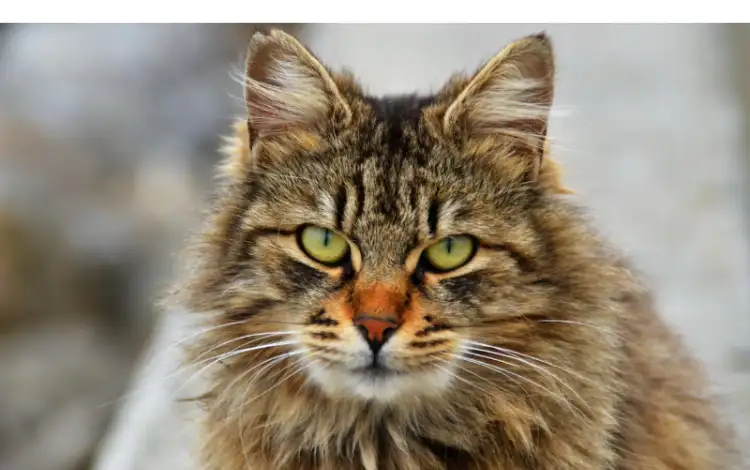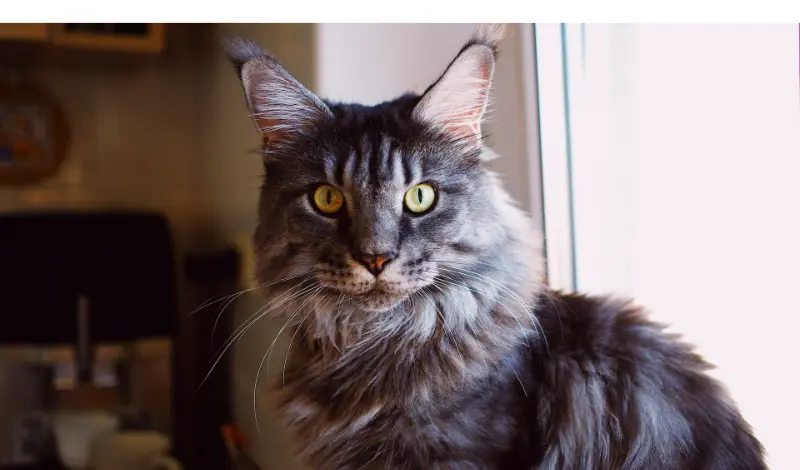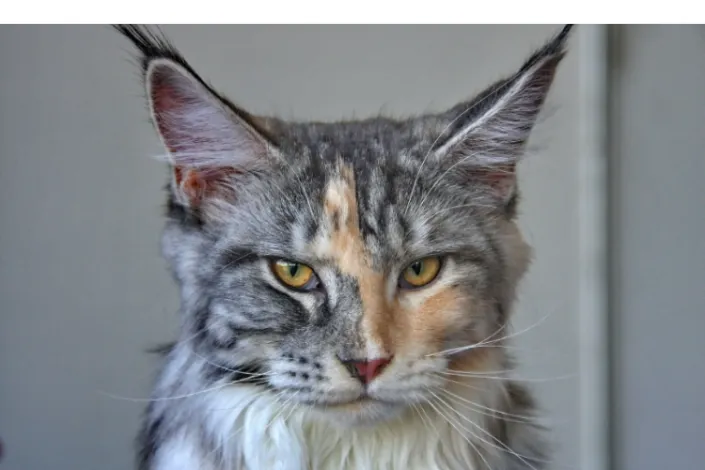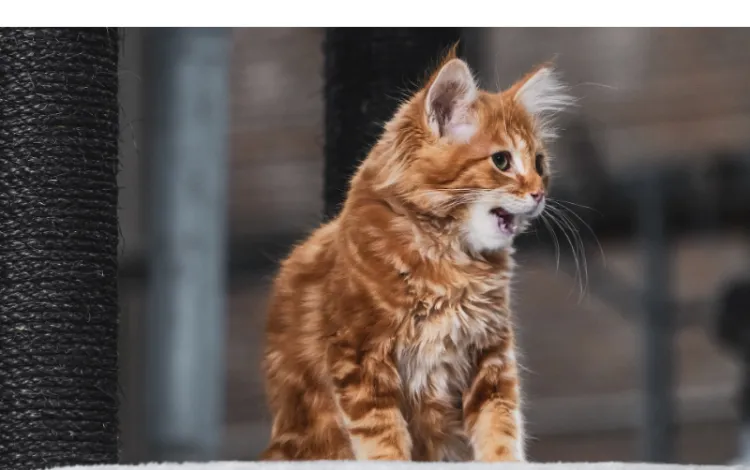Hey there, fellow cat lovers! 🐱 You might wonder, are Ragdoll cats easy to care for? or are Ragdoll cats good for beginners?
You’re in for a treat because we’ll explore these questions and more in this comprehensive guide.
Ragdoll cats are known for their affectionate nature, striking blue eyes, and stunning fur. But there’s more to these fluffy felines than just good looks.
Stick around to discover how to care for a Ragdoll cat and whether they fit you.
Oh, and don’t forget to check out our other articles on Ragdoll cats to learn more about their quirks and unique features, like their ability to jump fences and whether they like water!
Fun Fact #1: Ragdoll cats are often called "puppy cats" because they tend to follow their owners around the house, just like a loyal pup!
What are Ragdoll Cats?
Ragdoll cats are a popular breed known for their mesmerizing blue eyes, large size, and beautiful semi-longhaired coats. They originated in the 1960s in California, thanks to a breeder named Ann Baker.
With their laid-back nature, these gentle giants have captured the hearts of many cat lovers across the globe.
Breed Characteristics
Ragdoll cats come in various patterns and colors, including seal, blue, chocolate, lilac, red, and cream. They typically have a combination of pointed features, like their ears, face, and tail, along with contrasting lighter body colors.
These cats are also among the largest domesticated cat breeds, with males weighing 12-20 pounds and females weighing 8-15 pounds.
Personality Traits
Ragdolls are known for their sweet, affectionate, and easygoing personalities. They’re typically very social, enjoying the company of their humans and even other pets.
Ragdolls have a calm demeanor and adapt well to different environments, making them an excellent choice for families and first-time cat owners.
Fun Fact #2: The name "Ragdoll" comes from their tendency to go limp and floppy when picked up, just like a ragdoll toy!
Grooming and Maintenance
Caring for your Ragdoll’s appearance is important to keep them healthy and comfortable. Luckily, their grooming needs are relatively low-maintenance compared to other long-haired breeds.
Coat Care
Despite their luxurious coats, Ragdoll cats don’t require excessive grooming. Their fur is less prone to matting, thanks to its silky texture.
Brushing your Ragdoll 2-3 times a week with a high-quality brush should be enough to keep their fur tangle-free and minimize shedding. You may need to brush them more frequently during shedding seasons to keep their coat in tip-top shape.
Nail Trimming
Regular nail trimming is essential for your Ragdoll’s health and your furniture’s well-being. Trim their nails every 2-3 weeks to prevent overgrowth and snagging.
If you’re worried about your Ragdoll scratching furniture, check out our article on Ragdoll cats and furniture scratching.
Dental Hygiene
Ragdolls, like all cats, can develop dental issues if their teeth aren’t properly cared for. To maintain good oral health, brush your Ragdoll’s teeth at least once a week with a toothbrush and toothpaste designed for cats.
Regular dental check-ups at the vet are also crucial to keep their pearly whites in great condition.
Diet and Nutrition
A well-balanced diet is essential for your Ragdoll cat’s overall health and well-being. Providing them with the right nutrition will ensure they maintain a healthy weight, have a shiny coat, and live happy life.
Feeding Schedule
Ragdoll cats do best with a consistent feeding schedule. Most adult Ragdolls thrive on two meals per day, while kittens may need to be fed more frequently.
It’s important to consult your vet to determine the best feeding schedule and portion sizes for your individual cat, as their needs may vary based on age, weight, and activity level.
Special Dietary Considerations
High-quality cat food, either wet or dry, is essential for your Ragdoll. Look for food with high-quality protein sources, like real meat, as the primary ingredient. Avoid low-quality fillers, like corn and wheat, as they offer little nutritional value.
Some Ragdoll cats may have food sensitivities or allergies. If you suspect your cat has a food allergy, consult your vet for guidance on identifying the culprit and choosing a suitable diet.
Remember, always provide your cat access to fresh water, especially if they’re on a dry diet. Hydration is crucial for their health!
Exercise and Playtime
Ragdoll cats may be laid-back but still need regular exercise and mental stimulation to keep them happy and healthy. Engaging them in playtime will help them maintain a healthy weight and strengthen the bond between you and your feline friend.
Physical Activity
Ragdolls enjoy interactive play sessions, so it’s a good idea to have a variety of toys on hand to keep them entertained. Wand toys, laser pointers, and even a simple ball of paper can provide hours of fun.
Aim for at least 15-30 minutes of playtime daily to keep your Ragdoll active and mentally stimulated.
Mental Stimulation
Ragdoll cats are intelligent and curious, so providing them with mental stimulation is just as important as physical exercise. Puzzle toys, treat-dispensing toys, and even teaching them tricks can help keep their minds sharp.
You might be surprised by how high Ragdolls can jump! Check out our article on how high Ragdoll cats can jump for more fun facts.
Health Issues and Vet Care
Ragdoll cats are generally healthy, but like all breeds, they can be prone to certain health issues. Regular vet check-ups and preventative care can help keep your Ragdoll in tip-top shape.
Common Health Problems
Some health issues that may affect Ragdoll cats include:
- Hypertrophic Cardiomyopathy (HCM): A form of heart disease that causes the heart muscle to thicken, potentially leading to heart failure. Regular vet check-ups and early detection can help manage this condition.
- Kidney and urinary issues: Ragdolls may be more susceptible to kidney disease and urinary tract problems. Feeding a well-balanced diet, ensuring proper hydration, and regular vet visits can help reduce the risk.
- Obesity: Ragdoll cats can easily become overweight if not provided with a proper diet and sufficient exercise. Keep an eye on their weight and adjust their diet and exercise routine as needed.
Routine Vet Visits
Annual check-ups are essential for keeping your Ragdoll cat healthy. Your vet will assess your cat’s overall health, administer vaccinations, and check for any potential issues.
Regular dental check-ups and cleanings are also crucial for maintaining good oral health.
Training and Socialization
Ragdoll cats are known for their friendly and easygoing nature, but proper training and socialization are still important to ensure they grow up to be well-adjusted and confident cats.
Basic Training
Ragdolls are intelligent and can be trained to perform simple tricks, like sit, high-five, or even fetch! Positive reinforcement techniques, such as treats and praise, can make training sessions enjoyable and effective.
Be patient and consistent in your training approach; you’ll be amazed at what your Ragdoll can learn.
Socializing Your Ragdoll
Introducing your Ragdoll to new experiences, people, and other animals early in their life will help them become more adaptable and comfortable in various situations.
Socialization is crucial, especially if you plan on having other pets or frequent visitors in your home.
Expose your Ragdoll to different sounds, sights, and smells while they’re young, and make sure they have positive experiences with these new encounters.
Reward them with treats and praise to create positive associations, and they’ll grow up to be well-rounded, sociable cats.
Living with a Ragdoll Cat
Ragdoll cats are known for their loving and gentle nature, making them an excellent choice for families, singles, and seniors alike. They’re adaptable and can thrive in various living situations.
Home Environment
Ragdoll cats are indoor cats and should not be allowed to roam outside unsupervised. They lack the instincts and skills to defend themselves from dangers like other animals or traffic.
Check out our article here if you’re curious whether your Ragdoll can roam outside.
Provide your Ragdoll with a comfortable and safe living environment that includes cozy sleeping spots, scratching posts, and plenty of toys to keep them entertained. They’ll appreciate having a perch near a window to observe the world outside.
Compatibility with Other Pets
Ragdolls usually get along well with other pets, including dogs and other cats. Their easygoing nature allows them to adapt and bond with their furry siblings.
However, proper introductions and supervised interactions are essential to ensure a smooth transition when bringing a new pet into the household.
Conclusion
So, are Ragdoll cats easy to take care of? The answer is yes! Their laid-back nature and relatively low-maintenance grooming needs to make them an excellent choice for first-time cat owners and seasoned pet parents alike.
Their affectionate personality and adaptability make them a wonderful addition to any home.
Remember, caring for a Ragdoll cat involves providing them with a well-balanced diet, regular exercise, mental stimulation, and routine vet care.
With proper love and attention, your Ragdoll will become a cherished member of your family for years to come.









![why-maine-coon-follow-me-everywhere]](https://www.howtoanimal.com/wp-content/uploads/2023/04/Featured_Image_why-maine-coon-follow-me-everywhere.webp)
